...und das kostet sie Millionen von Dollar.
Kevin Gallagher, Geschäftsführer
Die IT-Abteilungen der Behörden sind oft eine der letzten Stellen, an die sich Politiker oder die Öffentlichkeit wenden, wenn es darum geht, mehr aus den begrenzten öffentlichen Mitteln herauszuholen. Dies ist wahrscheinlich nicht beabsichtigt. Gewählte Beamte und ihre Wähler verstehen, wenn Straßen und Brücken repariert werden müssen. Aber die IT-Abteilung wird oft nur als ein Haufen von Leuten in einem weit entfernten Gebäude gesehen, die dafür sorgen, dass die Desktops funktionieren, damit die Mitarbeiter der Stadtverwaltung ihre Arbeit erledigen können.
Die meisten Politiker, die die IT-Budgets festlegen, haben keine Ahnung, was die IT-Abteilung tut. Sie verlangen im Zuge des technologischen Wandels immer mehr von ihnen, aber im Gegensatz zu einer bröckelnden Straße oder einer rostigen Brücke, die von allen gesehen werden kann, wissen sie nicht, was in der IT-Abteilung wirklich passiert. Solange sie Zugang zu ihren Anwendungen und Daten haben, ist alles in Ordnung. Dieser Mangel an Wissen führt zu einem Mangel an politischem Willen, Änderungen vorzunehmen oder überhaupt zu erkennen, dass Änderungen erforderlich sind. Man kann Geld sparen, wenn man die Dinge anders angeht.
Europäische Städte waren führend bei der Umstellung auf Open-Source-Technologie. In diesem Monat ist es 13 Jahre her, dass die Stadt München beschloss, von Windows NT 4.0 auf Linux umzusteigen. Damals waren über 10.000 Desktops in den städtischen Dienststellen im Einsatz. München wurde zum Vorbild für andere europäische Städte und diente als Labor für das große Experiment. Im Jahr 2013 gab es in München 15.000 Nutzer von LibreOffice, einer Open-Source-Alternative zu Microsoft Office. Die Stadt stellte außerdem auf eine zentral verwaltete Open-Source-Infrastruktur um und konnte so viele der Effizienzvorteile nutzen, die proprietäre Produkte bieten würden, allerdings zu wesentlich geringeren Kosten.
In einigen Fällen machen der Preis und die Komplexität proprietärer zentralisierter Lösungen wie VDI jegliche Einsparungen zunichte, weil die Verwaltung kompliziert ist, externes Fachwissen erforderlich ist, um den Betrieb aufrechtzuerhalten, und die Infrastruktur stark beansprucht wird. München hat seit der Umstellung auf Open-Source-Lösungen durch eine massive Reduzierung der Softwarelizenzgebühren, eine zentrale Bereitstellung und rationalisierte Verwaltungstools Millionen von Dollar gespart.
Eine Stadt nach der anderen in Europa hat sich auf den Weg zu einer Open-Source-Welt gemacht, indem sie vorschreibt, dass Open-Source-Lösungen in Betracht gezogen und einer proprietären Softwarelösung vorgezogen werden. Eines der jüngsten Beispiele ist Bern, Schweiz. Im November 2015 beschloss der Berner Stadtrat, seine Abhängigkeit von proprietärer Software zu beenden. Diese Entscheidung wurde mit einem entsprechenden Mehrjahresplan getroffen, der mit dem Auslaufen der proprietären Lizenzen im Jahr 2018 zusammenfallen sollte. Die IT-Abteilung beantragte eine Verlängerung der proprietären Lizenzen um sechs Jahre. Der Rat lehnte diesen Antrag ab und erlaubte die Nutzung proprietärer Software nur bis 2018. Der Rat erklärte in einem Zitat aus mehreren Quellen, dass "die IT-Abteilung von nun an nur noch Lösungen beschaffen und implementieren darf, die plattformunabhängig sind."
In der Stadt Ede, Niederlande, beträgt das jährliche IT-Budget 24 Prozent weniger als andere Gemeinden einer vergleichbaren Größe. Dies ist vor allem darauf zurückzuführen, dass Ede nach der Umstellung auf Open Source extrem niedrige Ausgaben für Softwarelizenzen hat. Sie belaufen sich auf umgerechnet 56 € pro Vollzeitbeschäftigten gegenüber 731 € in anderen Gemeinden. Das sind 92 % weniger als der Durchschnitt!
Aarus, die zweitgrößte Stadt Dänemarks, hat kürzlich einen Haushaltsplan für den Zeitraum 2015 bis 2018 aufgestellt und erwartet, dass die Umstellung auf Open-Source-Produkte wie GIMP, Scribus, Inkscape und ProjectLibre zu Einsparungen in Höhe von 1 Million DKK ($US 153.000) im Jahr 2016, 2 Millionen DKK ($US 306.000) im Jahr 2017 und 3 Millionen DKK ($US 459.000) im Jahr 2018 und den Folgejahren führen wird. Das sind große Zahlen in einer mittelgroßen Stadt mit 330 000 Einwohnern.
Camilla Taekke, Projektleiterin der Stadt Aarhus wurde mit den Worten zitiert "Es gibt mehrere Anbieter, von denen wir nicht mehr abhängig sein wollen, und wir wollen auch nicht, dass sie unsere Daten besitzen. Unser Ziel ist es jedoch nicht, alle proprietären Anwendungen loszuwerden. Unser Ziel ist es, Open Source dort einzusetzen, wo es den größten Nutzen bringt." Um die Veränderungen herbeizuführen, sagte sie: "Ich bin mir nicht sicher, ob ein Top-down- oder ein Bottom-up-Ansatz der beste Weg ist. Wir stehen noch am Anfang dieser Reise und wollen jetzt die niedrig hängenden Früchte pflücken und gleichzeitig eine Zukunft für noch mehr Open-Source-Software schaffen. Wir haben gelernt, dass es wichtig ist, die wichtigsten Entscheidungsträger mit ins Boot zu holen, sonst wird nie etwas passieren. Gleichzeitig verfolgen wir bei der Erstellung von Materialien und Informationen einen Bottom-up-Ansatz, um durch die Forderung nach offenen Standards von den Anbietern die Abhängigkeit zu verringern und zu beseitigen."
Es ist diese politische Willenskraft, die notwendig ist, um in den USA und Kanada einen Wandel herbeizuführen. Die fortdauernde Abhängigkeit von proprietären Anbietern macht überhaupt keinen Sinn, wenn es kostenlose (oder kostengünstige) und flexible Software gibt, die dieselbe Aufgabe erfüllen kann. Sie würde die Beschaffungsregeln in keinem anderen Ministerium überleben. Heute gibt es Optionen, die in der Vergangenheit nicht verfügbar waren, und diese müssen in Betracht gezogen werden. Der Preis ist nicht die einzige Überlegung. Open-Source-Software kann auch Flexibilität bieten, indem sie eine maßgeschneiderte Anpassung ermöglicht oder die Zusammenarbeit und zusätzliche Einsparungen zwischen Regierungsstellen erlaubt. Die Funktionalität ähnlicher Software sollte verglichen werden. Die proprietäre Software kann in einigen Fällen einen weitaus größeren Funktionsumfang aufweisen. Doch damit sollte die Untersuchung nicht abgeschlossen sein. Wenn viele dieser Funktionen nicht von allen Mitarbeitern der Stadtverwaltung regelmäßig genutzt werden, warum wird dann die proprietäre Software mit vollem Funktionsumfang für alle gekauft und nicht für die wenigen, die sie tatsächlich benötigen?
Toulouse, Frankreich, ist eine weitere Stadt, die Microsoft-Lösungen durch die Erstellung von LibreOffice ersetzt hat. Einsparungen von über 1 Million Euro. Das Projekt wurde 2011 beschlossen und 2012 gestartet. Es dauerte eineinhalb Jahre, bis 90 Prozent der Desktops mit LibreOffice ausgestattet waren. Bis April 2014 war Erwane Monthubert für die Umsetzung der IT-Politik zuständig. Sie sagte: "Softwarelizenzen für Produktivitätssuiten kosten Toulouse alle drei Jahre 1,8 Millionen Euro. Die Migration hat uns etwa 800.000 Euro gekostet ... In den ersten drei Jahren haben wir tatsächlich 1 Million Euro eingespart. "
Natürlich wird die Umstellung auf ein neues System nicht ohne Übergangsschwierigkeiten vonstatten gehen. Das ist bei der Installation neuer proprietärer Software nie der Fall, also sollte man auch nicht erwarten, dass die Umstellung auf Open Source problemlos vonstatten geht. In jeder öffentlichen Organisation gibt es immer Widerstand gegen Veränderungen. Der Widerstand kommt von den Benutzern, die nicht lernen wollen, neue Anwendungen zu benutzen. Er kommt von den IT-Mitarbeitern, die nicht etwas reparieren wollen, was nicht kaputt ist. Er kommt von Anbietern proprietärer Software, die Lärm machen und darauf bestehen, dass Open-Source-Software nicht so robust oder sicher ist.
Um das Sicherheitsproblem direkt anzugehen, können wir uns an die Das italienische Militär hat gerade angekündigt, dass es auf Open Source umsteigen wird. mit über 100.000 Desktops und erwartet in den kommenden Jahren Einsparungen in Höhe von 26 bis 29 Millionen Euro ($30 bis 33 Millionen US-Dollar). Damit wird das Projekt zu einem der größten Einsätze von LibreOffice in Europa.
Viele Städte haben auch mit Fragen des Datenschutzes zu kämpfen. Wir können uns an Genomics England und die 100.000 Genome Projekt wo sie medizinische Daten schützen und gleichzeitig Forschern aus aller Welt Zugang gewähren müssen. Sie tun dies auch mit Open-Source-Software. Open-Source-Software kann problemlos Datenschutzaudits einhalten, da der Quellcode im Gegensatz zu proprietärer Software frei verfügbar ist.
Um den Widerstand der Benutzer gegen Veränderungen zu überwinden und eine Migration zu erleichtern, gibt es Produkte auf dem Markt, die es ermöglichen, Windows-Anwendungen über eine Linux-Plattform bereitzustellen. Inuvika's OVD Unternehmen ist ein solches Produkt, das heute verfügbar ist. Produkte zur Anwendungsvirtualisierung ermöglichen die sichere Bereitstellung von Anwendungen auf Thin-Client- oder Zero-Client-Geräten (Geräte, die nur sehr wenig Rechenleistung benötigen) oder auf Geräten der Mitarbeiter. Durch die Anwendungsvirtualisierung entfallen jegliche Rechenanforderungen auf dem Desktop, so dass keine teuren PCs mehr ersetzt werden müssen. Dies würde die sofortige Reduzierung einiger Windows-Lizenzen ermöglichen. Gleichzeitig kann eine Übergangszeit eingeräumt werden, in der die Mitarbeiter sowohl Windows- als auch Linux-Anwendungen nutzen können, während sie sich mit der Open-Source-Software vertraut machen. Alternativ kann die gemischte Umgebung auch weiterhin zu relativ geringen Kosten bereitgestellt werden, und zwar so lange wie nötig.
Anwendungsvirtualisierung und Zentralisierungssoftware sind jetzt in Open-Source-Formaten verfügbar, was bedeutet, dass VDI, in der Regel über VMware oder Citrix, nicht mehr die einzige Lösung für Kommunen ist, die ihre Desktop-Umgebung zentral verwalten wollen. Proprietäre Virtualisierungslösungen sind in der Regel Softwarepakete, die immer komplexer und teurer werden. Viele der Funktionen sind nicht einmal erforderlich, aber aufgrund der Bündelung sind die Kommunen gezwungen, Funktionen zu kaufen, die sie nicht benötigen. Bei Open-Source-Produkten können Sie auswählen, was Sie brauchen. Anwendungsvirtualisierung ist eine viel einfachere Möglichkeit, eine zentralisierte Lösung anzubieten als VDI. Sie ist nicht nur kosteneffizient, sondern auch viel flexibler. Mit Open-Source-Software entfällt ein großer Teil der Lizenzkomplexität, und es ist einfacher, zusätzliche Lizenzen zu geringen Kosten hinzuzufügen, sei es für mobile Mitarbeiter, für Mitarbeiter, die ihr eigenes Gerät mitbringen, oder für Mitarbeiter, die von mehreren Standorten aus arbeiten.
Städte, die auf Open Source umsteigen wollen, sollten die folgenden Schritte unternehmen:
- Achten Sie auf das bevorstehende Ende der Nutzungsdauer oder das Auslaufen bestehender proprietärer Lizenzen als Gelegenheit, von ihnen auf eine kostengünstigere Lösung umzusteigen.
- Betrachten Sie das Abonnementmodell einiger wichtiger Open-Source-Software als eine Möglichkeit, notwendige Anschaffungen in ein Betriebskostenbudget statt in ein Investitionsbudget zu verschieben und große Budgetausgaben für neue oder erneuerte proprietäre Software zu vermeiden.
- Erstellen Sie einen angemessenen Übergangsplan, der die Schulung und Anpassung des Personals an die neuen Anwendungen vorsieht.
- Achten Sie bei der Budgetierung darauf, dass die Gesamtbetriebskosten über die gesamte Lebensdauer des Projekts betrachtet werden und nicht nur die anfänglichen Kosten.
- Verwenden Sie Software, die es der IT-Abteilung ermöglicht, während des Übergangszeitraums sowohl Windows- als auch Open-Source-Software nebeneinander laufen zu lassen.
- Finden Sie die politische Willenskraft, um dies zu erreichen. Dies erfordert Maßnahmen der gewählten Beamten, aber es kann die Führung der IT-Abteilung erfordern, um ihnen zu zeigen, was getan werden kann.
Der Übergang zu Open Source ist unvermeidlich, da Open-Source-Gemeinschaften von Entwicklern weiterhin an Tausenden von Anwendungen arbeiten und immer mehr Softwareentwicklungsunternehmen in ein Open-Source-Modell investieren, um eine größere Flexibilität und niedrigere Endnutzerpreise als die bestehenden proprietären Wettbewerber zu ermöglichen. Europa hat mehr als ein Jahrzehnt Vorsprung vor den nordamerikanischen Städten. Die Qualität der verfügbaren Open-Source-Software hat sich in diesem Jahrzehnt so stark verbessert, dass der Übergang für Städte, die jetzt beginnen, viel einfacher sein kann, als es für München war, als es den Ball in Europa ins Rollen brachte.

